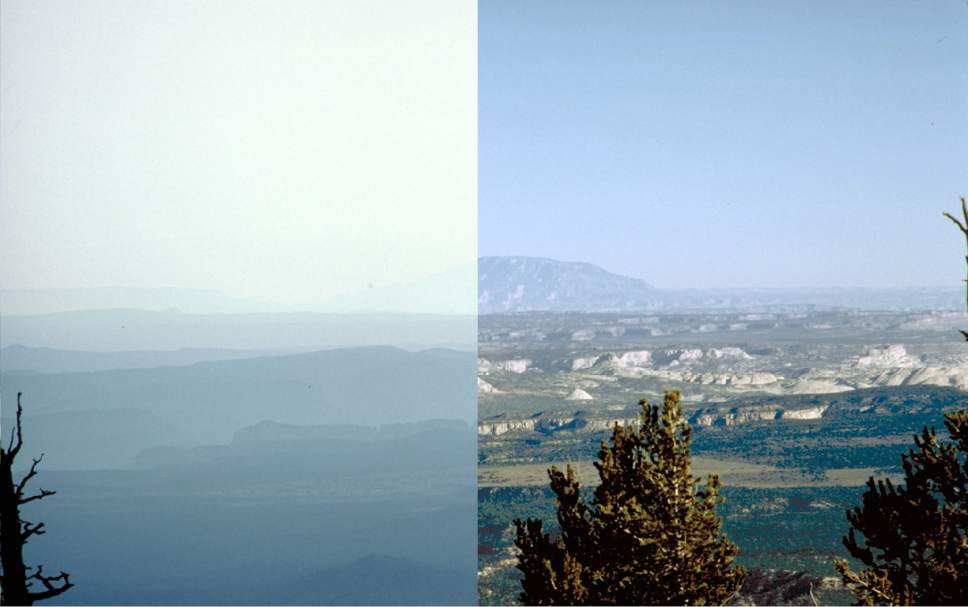I’ll never forget my first visit to Arches National Park - I was in my early twenties, and it was love at first sight. As a young woman from the green and lush Smoky Mountains, I was swept away by the beautiful red rock formations, wide open spaces, and perfect blue skies. If you’ve ever been to one of Utah’s national parks, it’s hard not to be in awe of the incredible beauty and majestic landscapes that make up the Beehive State. From rolling canyons of deep red rock to Delicate Arch and Island in the Sky, Utah is blessed with some of our nation’s most treasured public lands.
Sadly, for decades coal pollution from two plants owned by Warren Buffett’s PacifiCorp, known as Hunter and Huntington, have fouled clean air and clear skies in Utah’s five national parks, the Grand Canyon, and other wilderness areas and communities across the Southwest. Utah community and outdoor industry leaders have been calling on the EPA to take action and clean up air pollution in the region for years, and they just won a big victory.
“We know how much impact that pollution from these plants has on our state and the community I'm elected to serve,” wrote Mary McGann, a local Grand County Council Member from Moab. “The plants are responsible for 40 percent of all of the dangerous haze-causing nitrogen oxide pollution that comes from Utah's electricity sector. The National Park Service estimates that views at Arches and Canyonlands are shrouded in haze 83 percent of the time, and coal pollution is a major contributor.”
Utah’s parks are a vital source of the state’s growing outdoor recreation economy, which attracted more than 10 million visitors from around the world and added $730 million dollars to Utah’s economy in 2014. The parks represent an integral part of Utah’s way of life and heritage.
It’s why more than 85,000 public comments were delivered to the Environmental Protection Agency urging the agency to reduce coal pollution from the Hunter and Huntington plants in central Utah. It’s why more than 250 outdoor recreation businesses and leaders from Utah, Colorado, and Arizona sent letters to Region 8 Administrator Shaun McGrath to urge the EPA to ensure that the Southwest’s parks are protected from coal pollution. It’s why thousands of Utahns and countless others from across our country sent the message loud and clear to the EPA: Our parks deserve nothing less than strong and fair protection from coal pollution.
On June 1, the EPA delivered, when it released a plan to finally tackle Utah’s air pollution.
In a momentous decision that rightfully sets a standard that pollution from the plants needs to be reduced, cleaner air is on its way to Utah’s parks and communities. The EPA’s plan will result in meaningful reductions in coal pollution that is threatening iconic landscapes and public lands in places like Arches and Canyonlands, and as far away as the Grand Canyon and Mesa Verde in Colorado, while providing critical support to the communities and businesses that depend on them.
“Pollution knows no boundaries, as we’ve seen in Arizona and our outdoor-industry colleagues have seen in Utah and Colorado,” said Danny Giovale, founder and president of Kahtoola, Inc, in Flagstaff, Arizona. “By cleaning up these dangerous emissions, the EPA is creating a healthier future for Western families and businesses.”
With a broad and diverse coalition from every corner of on board supporting this decision, it’s time for Utahns and Rocky Mountain Power to come together to begin the work of protecting the health of local communities, the parks, and the air we breathe by achieving these reductions in haze pollution. That’s what Utahns want and deserve.
Delaying or fighting these safeguards only means more coal pollution that threatens our air, our health, our parks, and those businesses and communities who depend on them.
With this decision behind us, let’s make clean air for Utah’s parks and communities a reality. Join us - send a message here to thank EPA and show your support.
